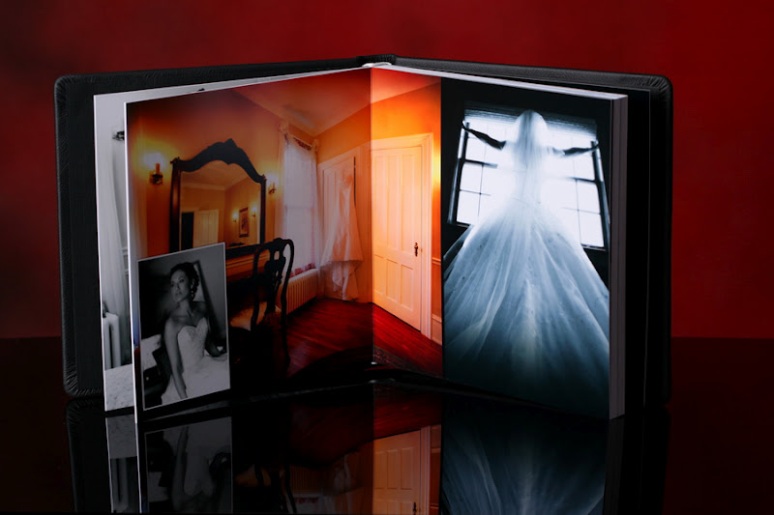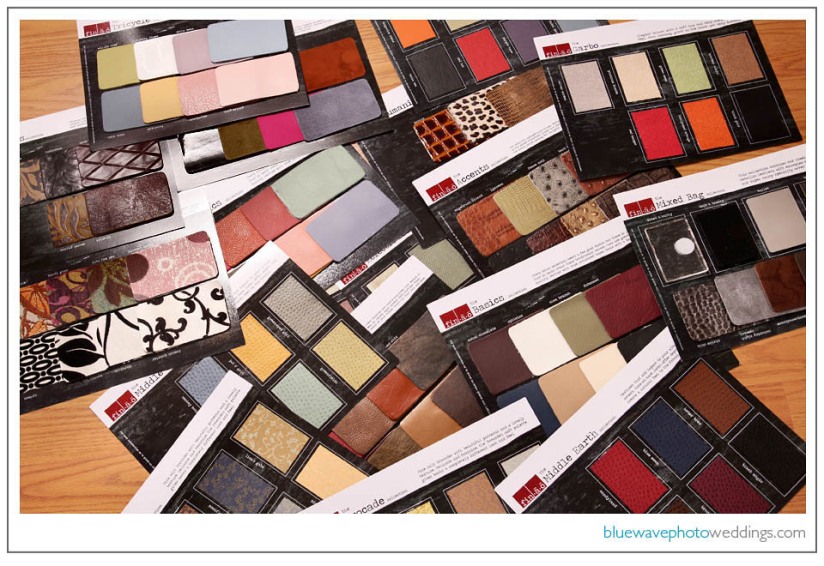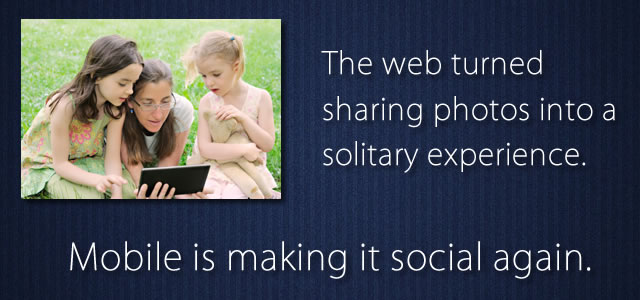STEPS in CREATING a PERFECT STORY BOOK
A Photographers look at setting-up/ creating/ & selling custom photo- books
SOME THINGS TO REMEMBER WHILE SHOOTING AN EVENT
1) First things first, check the basics.
Make sure you’ve got the right equipment to be ready for anything. Bring your Nikon camera with fresh batteries and plenty of room on the memory card. You might even want to bring an extra battery and memory card just in case. Remember that it is better to capture too many memories than too few. It’s also better to have extra gear with you and not need it, than need it and not have it with you.
2) Take some shots to set the scene
It’s always good to take some pictures that show where you are, how the party was decorated and how the setting looked. Take some wide shots that show as much of the surroundings of the party or festival that you’re at, and then get some close ups of the decorations and maybe some detail shots that show cool patterns. Make sure you aren’t using a flash to try to light a wide shot, as it doesn’t really work.
3) Make your friends look like stars
When photographing your friends, shoot them like we do on the red carpet. Fill the frame with a head to toe shot (what we call a full length shot) then go for a shot from the waist up, and then zoom in for a head shot. Place them so you pick up a party accent like balloons or banners, or place them next to a nice bit of decoration, so that the picture is colourful and has a sense of place. I love this one of the American actress, Mila Kunis, in her green dress against the patterned green chair.
Image shot on a Canon 5D Mark II / Image © Keoni K
4) Keep your camera out as much as possible
Don’t be afraid to have your camera out and at the ready. If you just keep it in your hand, you’ll find people relax and forget you even have one, which is great for catching people at their most natural. To get some different perspectives on the same event, maybe let a friend take your camera for a spin around the room.
5) Get the candid shots
It’s good to get some posed shots, but sometimes it’s what happens between poses that make a fun party picture. Check out the photo of Steve Buscemi talking to Alec Baldwin, Hilary Swank and others at HBO’s after party for the Screen Actors Guild. I am only a few feet away, but they don’t even realize that I am there. I’m not a small guy either – learning how to fit in with your surroundings and be part of the party is key to success.
Image shot on a Canon 5D Mark II / Image © Keoni K
6) Shoot without flash if you can
On a DSLR, this means learning how to use your ISO setting so you can shoot without flash to let that cool ambient light fill the frame and light your photos. On a compact camera, try turning off the flash (you will need to take it off auto flash) and then experiment with the settings to find the best one for the situation you’re in. The new COOLPIX cameras make this easier to do. The COOLPIX S8100, S9100,P300 and P500 cameras all include a highly sensitive CMOS image sensor which means that even in low light or extremely bright conditions, shots are recreated exactly as you experienced them. It also means the cameras can get higher image quality at a higher ISO, and the risk of blurring in nighttime shots is greater reduced.
7) Know your camera settings and how to find the right mode for your surroundings
Sometimes you’ll see night time images where you can see someone’s face properly but the background is black. That’s because the camera has set the exposure for the foreground (the face) but it isn’t the right exposure for the background. The COOLPIX cameras with CMOS sensors have an advanced Night Portrait mode, which works by taking consecutive shots, with and without flash, to expose the portrait subject and background separately. The consecutive images are then immediately combined, so shots are recreated exactly as you experienced them. Experiment with the different picture modes on your camera so you know what is good in a given situation. A beach party will look best with a different setting to a disco bash.
8) Zoom in, zoom out?
Don’t be afraid to use the zoom, but remember that if it is dark then you need to get as much light in as possible. This might mean standing back and zooming out to your widest setting which lets in the most light possible for the lens. In this picture at Coachella music festival, I’ve gone as wide as possible to get as much light in as possible as the sun is setting.
Image shot on a Canon 5D Mark II / Image © Keoni K
9) Anticipate the picture-perfect moments
Study human nature for a while before you start snapping away. See how people react in certain situations and you will see patterns that can be mined for great photos. For example, the look of shock when someone opens a gift, how people greet each other, or the surprise or laughter when somebody gets to the punch line of a story. Being ready for these moments helps you to capture the energy.
10) Get a different view
Don’t be afraid to put your camera on a table, hold it high above your head or shoot up from the floor. The crazier the angle the better. If you make the photos fun, that will come through when people look at them. The best compliment you can get is when one of your friends says, ‘How did you get THAT photo?’
11) SHARE!
Make sure you share your photos afterwards with one of the photos sharing sites. Half the fun is reliving the moment with people who were there, and showing people who weren’t there what happened. I like Flickr, Facebook and Tumblr for sharing photos, but my favourite outlet is my blog:
6 REASONS WHY ARTISTS FAIL AT BUSINESS
1) Artists want to create art, not run a business
Running a business has nothing to do with creating art. Nothing. Really, nothing. Do you want to create art for a living? If you do that is something you should come to terms with early on.
If that idea sounds horrible to you, don’t try to make a living being an artist. I mean that, you will be much happier going to a regular 9-5 job and doing your art on the side.
If you have no interest in running a business, don’t run a business! You will fail.
This has nothing to do with you as a person, it only has to do with what you want as a person. I suck at basketball, like a lot. It is damn embarrassing how bad I am at basketball. I once saw a basketball on a court and I swear it started rolling away on its own just to not be around me.
I am ok being horrible at basketball, because I have never once tried to be good at it. That isn’t really surprising is it? Something I have absolutely no desire to be good at, I am not good at.
If you have no desire to run a business well, you will not run a business well.
You have a couple of options here: Get someone else to run your business, or live the life of a starving artist.
It is actually a good thing that running a business and creating art have nothing to do with each other.This means you can suck at art and still make a great living being an artist.
2) Artists fight exactly what they need to do
Most often in business and in life the thing you don’t want to do is the thing you most need to do in order to succeed.
I am an artist, and trust me, this sucks. I know exactly what I want to do all the time: I want to stay in my studio and make art. I want the entire world to come to me offering opportunity. I want models to miraculously show up at my doorstep and ask if they can pay me to take photos of them.
I know this is ridiculous, it would never happen in real life. Now comes in all of the things you don’t really want to do. You want to get a client to hire you? Well you had better get out and start meeting a ton of people who have budgets. You would do well to make them like you too.
I have faced this dilemma many many times in my career – the struggle between being a business person and an artist.
I took this portrait of myself in 2008, and things haven’t really changed. It is still a struggle between myself as an artist and myself as a business person. To be honest, I have always put being an artist on some sort of pedastool. Like “ I am an artist, I shouldn’t have to do all that business stuff, that is for lame business people”.
I thought that by becoming a “business person” that I would lose my soul. I would lose what made me ME.
Little did I know but that attitude can get you in a lot of trouble. It turns out that business really isn’t that bad. Being good at business is a lot like being good at life. You don’t have to be “That Guy” and try to convince yourself and others that you are something you are not. Just find something you believe in, and tell people about it, you will be the greatest salesperson in the world because all you tell them will be true.
You have done this before. When you really wanted to see a movie, and you convinced your friends to go with you. When you made some awesome cookies and you got everyone around you to try them. When you told your friends about dropbox so they could sign up and you would get more storage. Guess what, you just became a sales person for Dropbox. If you are willing to do it for them, why not be willing to do it for yourself?
3) FEAR FEAR FEAR
Fear can be completely immobilizing. I am not speaking here of fear of spiders or snakes, those actually make sense. Having a healthy fear of snakes means you probably won’t be an idot and try to pick up a black mamba.
Most people have fears they aren’t fully aware of, and many of those people will never confront those fears. That is not really a problem if you don’t plan on pushing yourself, but if you want to make it as an artist and in business, one of the most beneficial things you can do for yourself is to identify and face your fears.
In case you are reading this and saying to yourself “I don’t really have fear getting in the way of my success” you are either a total badass (think Blade or Marcel The Shell) or you haven’t really thought about it.
What keeps you from walking up to the hottest girl at the bar and introducing yourself? What stops you from giving the cute dude on the train your number? What stops you from eating yellow snow?
The same reasons may be what keep you from calling potential clients or sponsors on the phone and introducing yourself. The same reason may keep you from taking your life savings and investing it in your company. The same thing might be keeping you from quitting your day job to pursue your passion.
In the past year I have done all of these things, and they were ALL HARD AS HELL. Each decision scared me, and I spent a long time letting the fear control my actions. When I finally made the decision to change my life and face my fears, amazing things started to happen. Instead of me just thinking my life was going to magically get better on its own, it actually did get better.
One thing that has always helped me to face my fears is to think to myself. – What is the worst thing that could happen?
If you ask yourself this and answer honestly, you will probably find that the answer isn’t that bad. For me it was something like this: I would lose all that I own, become poor and have to live with my parents.
Then I thought to myself “It would be just like I was 17 again, I loved being 17!”. It made everything better. Going broke doesn’t mean I would forget everything that I have learned, and I am pretty confident that if I started at ZERO today, I could surpass where I am now in less than 1 year. Jobs come and go, so do possessions and just about everything else in life.
“The worst thing that happens to you may be the best thing for you if you don’t let it get the best of you”
– Will Rogers
4) Artists forget about the little things (like taxes)
There are people who spend their entire lives learning how to start companies and run successful business and still fail. Don’t let your ignorance come back to haunt you.
Thankfully there is this great thing called the internet (Al Gore is the man) with answers for just about any question you may have.
Here are some things you really need to pay attention to:
- Taxes – If you are working for yourself you are not exempt from income tax. What does this mean? You just photographed a wedding and collected $3,000 for a job well done; you can pay your bills and have a little left over to celebrate. Not quite, you really just made about $1,800 – $2,200 depending on how you file your dependencies. Minus the depreciation and cost of gear/travel and you are looking at actually making $1,500. HALF. This is pretty serious, don’t wait until your taxes are due to figure this out, it will kill your business!
- Business Legal Structure – Depending on how you are going to structure your business (LLC vs Inc) you have some work to do here. My advice is to hire an attorney and an accountant – these people will not work for free. If you are curious Phlearn is set up as an LLC. We have 2 accountants and an attorney. Who do you think wrote this Terms of Service– Me?
- Bookkeeping – If you are planning on just using your personal checking account to run a business, please don’t. Open a second account, and handle everything that is business related through that account. Even if you are the only one getting paid by your business, pay yourself out of this account. This will make your life much easier when it comes to doing taxes.
“In this world nothing can be said to be certain, except death and taxes”
– Benjamin Franklin
5) Artists think they can do everything themselves.
The problem is that usually they can, but that doesn’t mean they should.
Artists are stubborn people, I know, I am one. When an artist puts their mind to something, they will figure out how to make it work. It is that curiosity that has made them an artist in the first place.
Here is a simple rule, live by it and you will find success:
Do what you are good at, and get other people to do the rest.
You don’t have to become an attorney to file all of your legal work, someone else is already an attorney. Do you really hate selling? Get someone else to do it. Hate brushing your teeth? Hire someone to brush them for you. Just don’t think that by not doing it that it doesn’t need to get done.
The biggest mistake you can make is by spending your time getting good at something you shouldn’t be doing in the first place. Someone else is already good at that, pay them to do it.
Think of your company as an airline. You may be the person who builds the plane, you may be the person who flies the plane, you may even be the dude holding the flags on the runway, but you can’t be all of them. Run your company as it would make sense on a large scale, figure out your role, figure out what other roles need to be filled, and go from there. Don’t have money to pay people? Get a loan or ask your rich uncle. If you are unwilling to do either of these things, you probably don’t believe in your own company.
6) Artists undervalue their work and skills/talent
You want to know how much your art/worth is worth? Exactly how much you say it is worth. If you don’t place value on your work, no one else will either.
Most of us started out making art because it was something we were passionate about, and we just wanted to create. I don’t know any artists who started out with money on their minds. For me personally, it was 2 years after first picking up a camera before I decided I was going to start charging for my art. This means that for 730 days, I was doing it just because I wanted to do it.
Most people see “work” as something they don’t want to do. In their heads “work” is worth money and “playing around” is not. This is why it is so hard for artists to place a price tag on their art, they would have done it even if they didn’t have to. Well I am here to tell you that just because that work you were doing didn’t suck, doesn’t mean that it doesn’t count as work. If you have years invested into your art, it has value.
Why is Godiva chocolate 5x more expensive that Hersheys? It is not 5 times better; in fact I likeDove Chocolate the best. They charge more because they tell you it is worth more. They place little chocolates delicately in a box of gold, adding nothing to the chocolate itself, only to the experience. You think you are getting something of value, and you are ok paying more for it.
People only know what you tell them. Put a fancy bow on your art, charge accordingly.
All credit goes to:
KISS BOOKS
“KISS is an amazing album company that comes in these cool covers that help to protect them from dust and also add some extra fabulousness. This particular album has 15 spreads, or 30 pages. That is my standard size, but you can have as many as 40 spreads (80 pages).”
“The leather albums come with thick, hard pages. You’d have to be a pretty strong muscle man to tear these up! The linen books (not pictured) come with a slightly thinner page and are great for guestbooks, senior albums, or to display pics from your family session in.”
BUSINESS TIP : (From time to time I find gold nuggets.)
3 things any company can learn from Apple
By Adam Lashinsky, Sr. Editor at LargeMarch 5, 2012: 7:32 AM ET
Yes, Apple is special. And no, not every company should emulate it. But here are key elements in its playbook other companies absolutely should adopt.
 FORTUNE — The latest installment of Applemania debuts this Wednesday, when Apple is expect to unveil another wonders of consumer gadgetry. The Apple-obsessed world expects an iPad 3. But then that same community was crestfallen not to receive an iPhone 5 in October. (Mere consumers, meanwhile, snapped up 37 million iPhones the following quarter, including the clearly-magical-enough iPhone 4S.) Apple’s tease to journalists in anticipation of the March 7 event in San Francisco — “We have something you really have to see. And touch.” — might just as likely signal a revamped iPod Touch. Or perhaps we’ll be able to fondle an Apple TV remote-control device.
FORTUNE — The latest installment of Applemania debuts this Wednesday, when Apple is expect to unveil another wonders of consumer gadgetry. The Apple-obsessed world expects an iPad 3. But then that same community was crestfallen not to receive an iPhone 5 in October. (Mere consumers, meanwhile, snapped up 37 million iPhones the following quarter, including the clearly-magical-enough iPhone 4S.) Apple’s tease to journalists in anticipation of the March 7 event in San Francisco — “We have something you really have to see. And touch.” — might just as likely signal a revamped iPod Touch. Or perhaps we’ll be able to fondle an Apple TV remote-control device.
Whatever. The fact is that all eyes once again will be focused on the world’s most valuable company. Those eyes have watched Apple’s (AAPL) every move for years now, of course. Yet what’s remarkable is how little the competition catches on, or catches up, to Apple’s ways. Yes, Apple is special. And no, not every company can and should be like Apple, at least not in every way. But there are key aspects of the Apple playbook that other companies absolutely should emulate. Here are three:
MORE: The secrets Apple keeps
Say no more often. Steve Jobs was fond of saying that saying no was harder — and more important — than saying yes. Apple said no to making personal digital assistants, in the 90s that is. It said no for years to making a telephone– until it said yes. Apple refused to focus on selling to businesses. It wouldn’t put a USB port on the first iPad. And so on. While not every company can achieve Apple’s level of Zen by rejecting seemingly good business opportunities, there isn’t a company out there that wouldn’t benefit by more rigorously asking itself: “Have we absolutely satisfied ourselves that we have said yes for the right reasons?” How many companies pursue revenue opportunities that any new recruit knows the company is doing to make money rather than delight customers. (An example: Jobs ridiculed the PC industry for years for the margin-boosting “crapware” that comes loaded on a PC. The crap remains.) It takes real courage to say no. But it’s not like top executives aren’t being compensated for brave action.
Focus your message better. Whatever Apple unveils this week, you can be sure it will be succinctly explained and that the explanation will be summarized in a short, pithy expression. The iPod was a thousand songs in your pocket. The iPhone was the best iPod Apple had made as well as a phone with a Web browser. When Steve Jobs showed the iPad 2 he stressed repeatedly that we were living in a post-PC world. How convenient for the company leading the tablet computer revolution. Other companies muddle their message, in part by allowing multiple spokespeople to deliver it. Apple sharply limits the messengers of its sharply crafted message. The result is that its customers repeat Apple’s lines exactly as Apple crafts them. It’s the ultimate feedback loop.
MORE: Why Apple will pay a dividend
Make products, not money. It is counterintuitive, and almost unbelievable, but Apple’s way is the antithesis of the revenue optimization of the rest of the business world. Of course Apple wants to make money, and of course profits are important. (It registered an astounding $13 billion in profits last quarter.) But Apple doesn’t approach a new product from the perspective of how much money it will make. Instead, it dreams up what will be a product its own people want to use, and then its sets about making the product. Only later will Apple apply the typical levers of business — pricing, market penetration, etc. — to its product plans. It’s similar in tone and spirit to the career advice that wise older people give to inexperienced younger people: Do what you love, and the money will follow.
Adam Lashinsky’s book, Inside Apple: How America’s Most Admired–and Secretive—Company Really Works, was published in January by Grand Central Publishing.
COOL BOOKS : FINAO
This is one fantastic book company. Especially if you want the wow factor.
Great looking picture covers.
Pages come in thin & thick sizes to make the book a perfect size no matter how many pages you put in or leave out.
Awesome designer covers.
Multiple cover swotches, looks, sizes, & designs. The best customer service you could ask for.
& FINAO is a Green Co..
This is the type of WOW factor you want for the bride that places value in the photography package.
Beautiful “GREEN” custom hand packaged books.
FINAO for the Professional Photographer
the BIG PICTURE
I have always been a story teller. I can look all the way back to my elementary years of school when I would sketch & paint telling stories with each stroke. In High school I got into music/ songwriting telling story after story in each lyrical note. When I became a recording artist I found that it was fun to make a living from the thing I did best, telling stories.
So when it came time to shift into the role of photography/ wedding photographer. I found that just taking the pictures was not enough. I had to tell the story of the day. I went to a Gary Fong seminar & heard him preach about selling wedding albums through the means of an on line slideshow. It didn’t take very long to figure out that my story telling could fit both the slideshow & sell the book. This worked out great for weddings. My sales went through the roof. Now, I thought to my self, I also like to do lifestyle photography. I wondered if the same kind of wedding format would fit into lifestyle work. It didn’t take to long before I was doing the same thing with I year baby books, family books, senior year book etc.. I have even got a few gigs with NFL players & their families. where they would have me capture the game on the field to their families in the stands. I found that if you can imagine it, you can shoot the story & make a book.
Steps in Shooting your Story:
1) Client interaction: Business, Style, Posing, & more Business.
2) Quick Scout: Backgrounds & Foregrounds.
3) Making the magic easy for the Client.
4) Lighting: Quick Bounce & Strobe.
5) Fast Edit: In & Out of the camera.
6) Photoshop/ InDEsign.
7) Book building programs.
8) BOOKS: How to sell the book, pages, covers.
I’ll give you little tips to these areas & any other cool tips or programs that come my way. Enjoy
BUILD A STORY & MAKE THEM CRY
I love browsing through photography websites & blogs. I find my self always curious in what the photographer sees? Or how original are the backgrounds and poses? How much energy & emotion is in the image. Where does the photographer position him/herself to capture the moment in time? Then there’s lighting, always the lighting. But most of all I try to see if the story of the day is being told,
Believe me I know there are some incredible photographers out there. The common thread I’ve discovered is that so many photographers stop at the “cool photo” never thinking of what the customer wants to see. I know that for the most part we the photographers are showing off are best shots to the customer, keeping in the back of our mind that a few other photographers may see our work on the World Wide Web.
However, as professionals we are forgetting the elephant in the room…
THE CUSTOMER!! They don’t really care about the lighting, or what cool action is used.
They want to be emotionally moved by what they see. Enter…STICKYALBUMS.
STICKYALBUMS is a fantastic way to show off those incredible pictures to the person that counts the most, the customer. Yes they are the one who may purchase more images, slideshows, books, a canvas clusters etc… More importantly, they are the one who’s going to become a loyal and vocal customer.
You need to use SITCKYALBUMS as your WOW factor. I have found a great way to take the viewer/ client to another level by following these few minor steps.
1) Pick your best 10 to 15 “cool” images: The photos you want every photographer to look at on your website. You know, the pics that say, “THIS is my style”.
2) Time Line: Arrange these photos into the story of the day. Your session could be 8hrs or a half hour. It doesn’t matter there was a timeline & ultimately a story to tell.
3) Take the next 10 to 15 favorite photos from your folder & filter them into the timeline you have created. These are what went on between all the cool shots. Now you should have about 20 to 30 images.
4) Insert LOGO: This is only good if you want to have the multiple viewers of your customers app walk away with your name & logo on their mind. Make sure you place the logos on your WOW pics. These are the pictures you know people are going to remember. Having your name plastered across an app show like this is the kind of free commercial we as small business owners dream of.
5) BIG BANG Theory: Remember to open & close with a BIG bang. Putting the most striking photos as bookends of your story well hopefully bring a smile & bonus, a tear. This is yet another way to keep your name on their mind.
You can easily use these same design steps when building a slideshow, or custom book for your customers. The cool thing about STICKYALBUMS app is that it’s a faster and easier way to promote your business & keep customers happy, and ultimately setting you apart from others in the industry, I hope these design steps will help you out as much as it has helped me.
SHOOT for the BOOK
Hi I’m KEONI K. I love what I do. I love creating & directing, designing & producing. I love to tell stories through art. I’ve been a signed recording artist. A painter & sculptor. Designer & Dreamer. I’m an artist. This is a teaching blog on what I do & how I go about SHOOTING for the BOOK.
I of course
-
Recent Posts
Archives
Categories
Meta




































